- Home
- Orhan Pamuk
Other Colors Page 19
Other Colors Read online
Page 19
It is clear, nonetheless, that there is a sort of narrative novel that is particular to the countries of the Third World. Its originality has less to do with the writer’s location than with the fact that he knows he is writing far from the world’s literary centers and he feels this distance inside himself. If there is anything that distinguishes Third World literature, it is not the poverty, violence, politics, or social turmoil of the country from which it issues but rather the writer’s awareness that his work is somehow remote from the centers where the history of his art—the art of the novel—is described, and he reflects this distance in his work. What is crucial here is the Third World writer’s sense of being exiled from the world’s literary centers. A Third World writer can choose to leave his own country and resettle—as Vargas Llosa did—in one of the cultural centers of Europe. But his sense of himself may not change, for a Third World writer’s “exile” is not so much a matter of geography as a spiritual state, a sense of exclusion, of being a perpetual foreigner.
At the same time, this sense of being an outsider frees him from anxieties about originality. He need not enter into obsessive contest with fathers or forerunners to find his own voice. For he is exploring new terrain, touching on subjects that have never been discussed in his culture, and often addressing distinct and emergent readerships, never seen before in his country—this gives his writing its own sort of originality, its authenticity.
In a youthful review of Simone de Beauvoir’s Les belles images, Vargas Llosa suggests what the guiding principles of such a career might be. He praises de Beauvoir not just for writing a brilliant novel but for refusing the purposes of the nouveau roman then fashionable (the 1960s). According to Vargas Llosa, Simone de Beauvoir’s greatest achievement was to take the novelistic forms and writing strategies of writers like Alain Robbe-Grillet, Nathalie Sarraute, Michel Butor, and Samuel Beckett and to use them to entirely different ends.
Vargas Llosa elaborates his ideas about the “use” of other writers’ strategies and forms in another essay on Sartre. In later years, Vargas Llosa would complain that Sartre’s novels are devoid of wit and mystery, that his essays are clearly written but politically confused (or confusing), and that his art is outdated and trite; he would express dismay that in his own Marxist days he had been deeply influenced, even undone, by Sartre. Vargas Llosa has dated his disillusionment with Jean-Paul Sartre to an article he read in Le Monde in 1964. In this infamous article (it made waves even in Turkey), Sartre set literature alongside a black child dying of hunger in a Third World country like Biafra, declaring that as long as such suffering went on it was a “luxury” for poor countries to engage with literature. He even went so far as to suggest that Third World writers would never be able to enjoy the so-called luxury of literature with a clear conscience, and to conclude that literature was the business of rich countries. Vargas Llosa does admit that certain aspects of Sartre’s thinking, his careful logic and his insistence that literature is too important ever to be a game, have proved “serviceable”—it was thanks to Sartre that Vargas Llosa found his way through the labyrinths of literature and politics—so in the end, Sartre was a “useful” guide.
To be forever aware of one’s distance from the center, to discuss the mechanics of inspiration and also the ways in which other writers’ discoveries can be useful, one must be possessed of a lively innocence (and there is, according to Vargas Llosa, nothing innocent or naïve in Sartre). Vargas Llosa’s own lively innocence is reflected not just in his novels but in his criticism, his essays, and his other work.
Whether he is writing about his son’s involvement with the Rastafarians, or offering up a political tableau of Nicaragua’s Marxist Sandinistas, or describing the 1992 World Cup, he never fails to engage, never holds himself apart; he is particularly good on Camus, whom he recalls having read in a desultory manner, as a young man—so great was Sartre’s influence on him at that time. Many years later, after surviving a terrorist attack in Lima, he read The Rebel, Camus’s long essay on history and violence, and decided he preferred Camus to Sartre. Still, he praises Sartre’s essays for getting to the heart of the matter, and the same can said of Vargas Llosa’s essays.
Sartre is a vexed figure for Vargas Llosa, perhaps even a father figure. John Dos Passos, who so influenced Sartre, is important too for Vargas Llosa; he praises him for his refusal of easy sentimentality and for his experimentation with new narrative forms. Like Sartre, Vargas Llosa would take up collage, juxtaposition, montage, cut-and-paste, and similar narrative strategies to orchestrate his novels.
In another essay, Vargas Llosa praises Doris Lessing for being the sort of writer who was “engaged” in the Sartrean sense of the word. For him the engaged novel is one immersed in the quarrels, legends, and violence of its time, and Vargas Llosa’s early leftist fiction is a good example of the genre. But it is an imaginative, playful leftist we see in these early novels. Of all the writers Vargas Llosa discusses in his essays—Joyce, Hemingway, and Bataille among them—the one to whom he owes the greatest debt is Faulkner. What Vargas Llosa praises in Sanctuary—its juxtaposition of scenes and leaps in time—is in even greater evidence in Vargas Llosa’s own novels. He makes masterful use of this strategy—the ruthless crosscutting of voices, stories, and dialogues—in Death in the Andes.
This novel takes place in the abandoned and disintegrating small towns of the remote Andes—in empty valleys, mineral beds, mountain roads, and one field that is anything but deserted—and follows an investigation into a series of disappearances that may be murders. The investigator, Corporal Lituma, and his opposite number in the civil guard, Thomas Correno, will both be familiar to readers of Vargas Llosa’s other novels. As the two men roam the mountains interrogating suspects, they tell each other about their past love affairs, ever watchful for an ambush by the Maoist Shining Path guerrillas. The people they meet along the way, and the stories that they tell, blend with their personal histories to create a vast tableau of contemporary Peru in all its pain and misery.
Of course, the murder suspects turn out to be Shining Path guerrillas and a couple who run a canteen in the area and put on strange performances recalling Incan customs. As the Shining Path’s ruthless local political murders are described, and the evidence of old Incan sacrificial rituals builds, the mood grows steadily darker. Blowing through the wild landscapes of the Andes is a strong wind of irrationality. Death is everywhere in this book; in the poverty of Peru, the grim realities of guerrilla warfare, and the general hopelessness.
But the reader is left wondering if Vargas Llosa the modernist has lost his nerve, for he almost seems to have turned himself into a postmodern anthropologist, returning to his native land to study its irrationality, its violence, its preenlightenment values, and its rituals. This book is packed with legends, old gods, mountain spirits, devils, demons, and witches—more than the story needs. “But of course we make a mistake when we try to understand these killings with our minds,” says one character. “They have no rational explanation.”
Surprisingly, there is no trace of the irrational in the texture of the novel itself. Death in the Andes has two contradictory ambitions: to be a detective novel that displays Cartesian intellect and logic, and to create an atmosphere of irrationality that hints at the hidden roots of violence and cruelty. Because of those cross-purposes, there is no space in which a new vision might emerge. Ultimately Death in the Andes is a typical Vargas Llosa novel. Despite its moments of confusion, the narration is controlled throughout. The characters’ voices are carefully modulated. The novel’s power and beauty inhere in the tightness of its composition.
Though Death in the Andes skirts tired modernist hypotheses about the Third World, it is still not a postmodern novel in the manner of, say, Pynchon’s Gravity’s Rainbow. It sees the “other” as an irrational being, embedding in typical pursuits and settings: sorcery, strange rituals, savage landscapes, and brutality. But it would be wrong to dismiss it as a coarse statement about
inscrutable cultures, for it is a playful and mostly witty realist text about everyday life in Peru: in short, a trustworthy history. Its account of the activities of guerrillas in a small town, and of their subsequent trials, and its portrait of the melodramatic love affair between a soldier and a prostitute have the credibility of reportage. If the Peru of Death in the Andes is a place “no one can understand,” it is also a country where everyone complains all too understandably of a poor wage and the stupidity of risking one’s life to earn it. Although always experimental, Vargas Llosa is one of the most realistic of Latin America’s writers.
His hero, Corporal Lituma, was the central figure in Who Killed Polomino Molero? This, too, is a detective novel. In The Green House, which takes its name from a brothel, Lituma enjoys a double life, and he has a cameo in Aunt Julia and the Scriptwriter. In Lituma, Vargas Llosa offers us a well-founded and sympathetic portrayal of a soldier, with his down-to-earth pragmatism and his steadfast sense of duty that keeps him safe from extremism, his honest prudence, his instinct for survival, and his caustic humor.
His own schooling in a military lycée in Peru gave Vargas Llosa an insight into military life that he has used to great advantage, as in his descriptions of the rivalries and quarrels among young cadets in The Time of the Hero and in Captain Pantoja and the Special Service, a satire of bureaucracy and sex in the army. He is particularly brilliant on male friendships, locating the points of fragility in macho poses, and portraying tough men hopelessly in love with prostitutes, or the crude joke that dispels male sentimentality. His cruel wit is always very entertaining, and it is never without purpose. If one reads all his work, beginning with his first novels, one can see that Vargas Llosa has always preferred brilliant realists and mocking moderates to utopians and fanatics.
Soldiers are the heroes of Death in the Andes. There is little effort to understand the Shining Path guerrillas. They figure as representatives of unadulterated irrationality and an evil that borders on the absurd. This has much to do with the political changes that the author underwent as he grew older. As a young man, the modernist Marxist Vargas Llosa was entranced by the Cuban revolution, but as he matured he became a liberal, and in the 1980s, he was scathing about those who, like Günter Grass, said that “all of Latin America had to use Cuba as an example.” Half in jest, Vargas Llosa defined himself as “one of the two writers in the world who admire Margaret Thatcher and hate Fidel Castro,” adding that “the other writer, more accurately described as a poet, was Philip Larkin.”
After reading his account of the Shining Path guerrillas in Death in the Andes, it is quite a surprise to read, in one of Vargas Llosa’s youthful essays, a tribute to a Marxist guerrilla, a friend who was killed during a “clash with the Peruvian army.” One is left wondering whether the humanity in guerrillas is impossible for people like us to see once our own youth has passed, or is it that after we have passed a certain age people like us have no friends who are guerrillas? Vargas Llosa is such a fine writer and his views are so compelling that even in those places where one’s politics part from his, his voice still possesses the sincerity of a small boy for whom one cannot help but feel affection.
In an early article about Sebastian Salazar Bondy, one of Peru’s most brilliant writers, who died a broken man at a very young age, he asks, “What does it mean to be a writer in Peru?” It is a question that must bring sorrow to us all, and not just because Peru lacks a proper body of readers and a serious literary publishing culture. It is easy to share Vargas Llosa’s fury when he writes of the poverty, indifference, ignorance, and hostility that Peruvian writers are forced to endure; even if they survive all this, they are assumed to live outside the real world, leading Vargas Llosa to say that “all Peruvian writers are in the end doomed to defeat.” When one reads of Vargas Llosa’s youth and his hatred for the Peruvian bourgeoisie (which he describes as “more stupid than all the others”), when he bemoans its total lack of interest in books and its paltry offerings to world literature, when he describes his own great hunger for foreign literature, the sorrow in his voice is unmistakably that of remoteness from the center, a state of mind that people like us understand all too well.
CHAPTER FORTY-FOUR
Salman Rushdie: The Satanic Verses and the Freedom of the Writer
The exaggerated scenes that once marked Salman Rushdie as a quintessential magical realist, and the dreams this writer once invented for his books, have now come to resemble real life: His own novel has been banned in India, Pakistan, and most Islamic countries. There is as much anger against the English and American publishers as against the author and the novel. There have been protests and demonstrations in the West as well as in the East. Booksellers who stock the book have been threatened. When the book is burned in public places, so too is the author in effigy, and now the Ayatollah Khomeini has put a price on Rushdie’s head. Some say he will have to spend the rest of his life in hiding, while others say that with plastic surgery and a new identity he might be safe to walk among us again. While the world media continue to go to astounding lengths to give us live coverage of the manhunt, which door or chimney an assassin might use, we have heard discussions about freedom of thought here—or, rather, the ways in which the imaginary world of a novelist might be rightfully limited. As we in Turkey live in a secular republic that puts strict curbs on both Islam and freedom of expression, we are always content to sit on the sidelines as the game plays itself out just beyond our borders, amusing ourselves with the details we can glean from the foreign press.
No, I am not saying that there is a total lack of interest, but as in Iran, those who are most eager to launch into the subject tend to be those who have not read one word of the novel and do not in fact read novels at all: The Religious Affairs Directorate is ordered to convene an emergency meeting, as if the matter posed a theological challenge to the history of Islam, whereupon imams who never read novels give sermons to congregations who never read novels, and journalists who have not read this novel pose theological questions to professors—who have not read it either—and then go on to devise headlines whose deep shamefulness has nothing to do with theology: SHOULD HE BE KILLED OR SHOULD HE NOT BE KILLED?
Like his second novel, Midnight’s Children, Salman Rushdie’s Satanic Verses bears the stamp of “magical realism,” which has informed world literature for twenty years now, though the lineage can be traced back to Rabelais. As we can see in Günter Grass’s The Tin Drum and Gabriel García Márquez’s One Hundred Years of Solitude—the two finest books in this mode, both already available in Turkish—the author’s characters and their world do not obey the laws of the physical world. In these novels we see animals speaking, people flying, dead people standing, charming ghosts and spirits strolling about, objects coming to life, and—as in The Satanic Verses—natural events taking supernatural turns. Though The Satanic Verses has characters who quarrel with djinns, demons, and devils, changing from people into devils or goats, it also relates two intertwined tales that would fit easily into a realist novel: These follow the fortunes of two Indians from Bombay who move to London and become English.
Gibreel Farishta is a film star who grew up in a Bombay that resembles our own Istanbul, coming to public notice in a film industry that resembles our own Yeşilçam and thereafter gaining fame playing Hindu gods. Saladin Chamcha is a Bombay Muslim who, like Rushdie himself, is sent to England by his wealthy businessman father to study at a public school. (At one point the narrator defines him as “an Indian translated into English.”) The two heroes come together during an Air India flight to London. The Air India plane (to which Rushdie, as fond as ever of wordplay, gives the name Garden) is hijacked by Sikh terrorists, forced to land and then take off again, and as it is approaching London it vanishes into space. Though everyone else on board dies, the two heroes fall as if from heaven into a snow-covered England, safe and sound but, like Kafka’s Gregor Samsa, transformed. Saladin Chamcha, now a musician, turns into a horned and hairy-legged goat.
Racing before him, Gibreel Farishta remains the same physically but undergoes a change of personality. With a megalomaniacal fury that will be tamed by medical intervention, Gibreel believes himself to be the archangel of the same name who delivered the Koran to the Prophet Muhammad. The journey that the two heroes make over English soil to London (called Eloven Diyoven in the novel) is in essence the story of Indian and Pakistani emigration to the same city.
Starting out together like twins, the heroes find each other again after every separation, for better or for worse. Their progress is unsure: Now they side with the angels and now with the devils. But—and this is always the case for me with magical realism—it was not the supernatural adventures that kept me reading. The texture emerges from a weaving together of flashback, reminiscence, digression, and subplot, so it is the narrator we heed first: He offers the reader long orations here and there (as for example a long critique of Thatcherism politics). What impresses me most is the myth-laden language that he and his heroes use to describe their early years in Bombay. (Like Nabokov, Rushdie loves word games, internal rhymes, seldom-used words, and neologisms.) As the narrator distances himself and his heroes from their “Muslim youth” to go in search of transformation, to shed one language, one culture, a certain anger seeps in. Years later, when the narrator returns to his own country, his father will give his anglicized son his own views on anger and its consequences: “If you went abroad to hate your own kind, then you will have nothing but hatred from your own kind!”

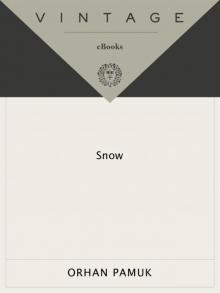 Snow
Snow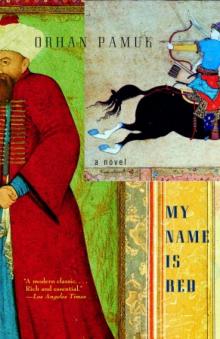 My Name is Red
My Name is Red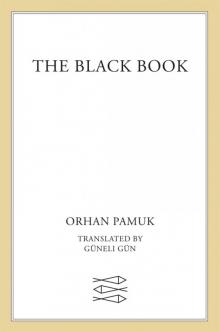 The Black Book
The Black Book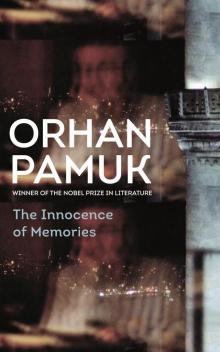 The Innocence of Memories
The Innocence of Memories The White Castle
The White Castle Other Colors
Other Colors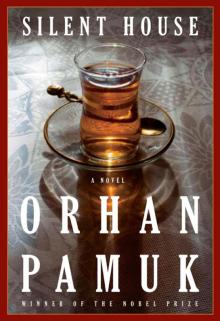 Silent House
Silent House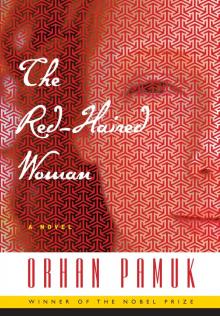 The Red-Haired Woman
The Red-Haired Woman The Museum of Innocence
The Museum of Innocence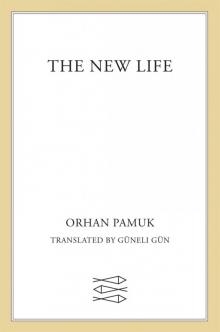 The New Life
The New Life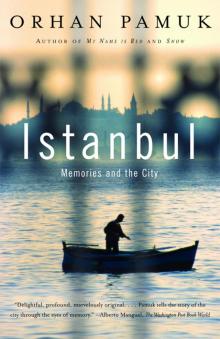 Istanbul
Istanbul